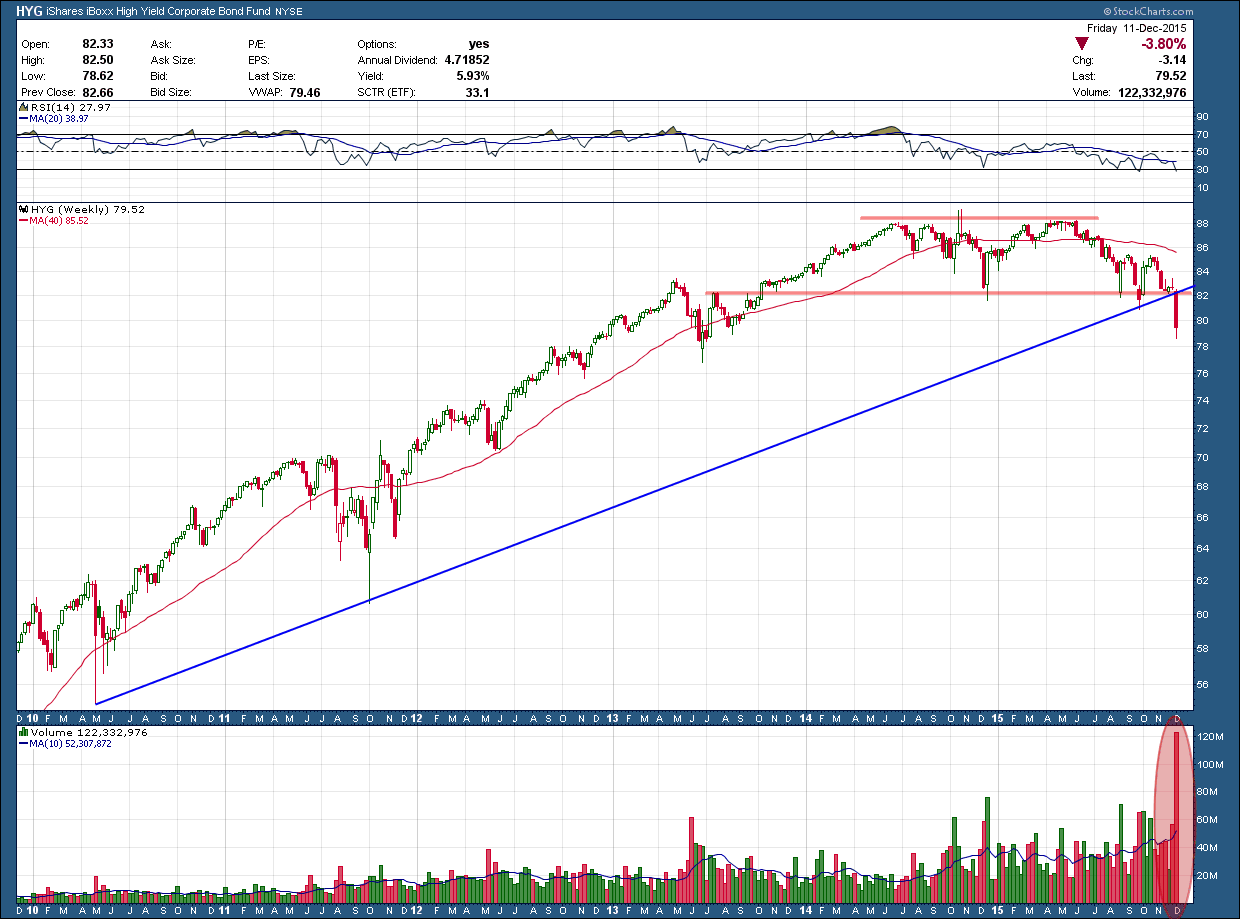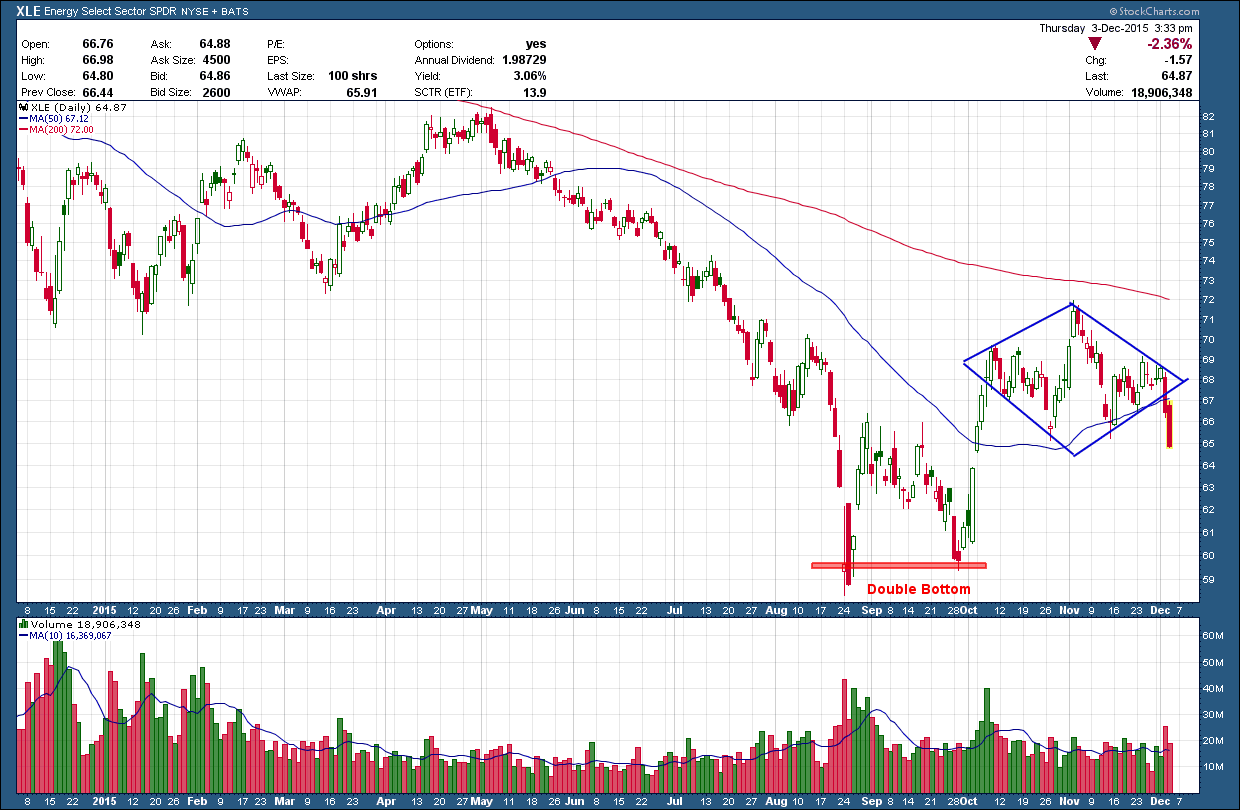On last month’ video, I mentioned one of my biggest concerns after looking over the charts was the junk bond market. The concern was we were consolidating and once again testing the lower boundaries of the range. A break below could not only push prices much lower but ultimately pull stocks along with them. The concern is the further oil falls and the longer the price stays depressed the greater the likelihood those companies who borrowed heavily to capitalize on the US energy boom will NOT be able to pay back their loans. What happens then? The banks that lent the money will be on the hook. And, depending upon their leverage and exposure, could be setting up for another 2008-type crisis (that too was debt related, the difference was then it was housing debt). We are not talking chump change as it is estimated there is 400 hundred billion of energy related junk bonds and half is now “distressed”
This past week stock market participants watched as crude continued its cascade lower pushing energy stocks even further and junk bonds joined the party with gusto. One junk bond etf I follow, HYG, broke down hard below both its rising (blue) and horizontal (red) support as I feared would eventually happen. Notice also how price is firmly below the red 200 day moving average which has now curled over and is pointing down. Volume was enormous, more than 3x times its long term average and the greatest in the history of this ETF.
Large volume is what you want to see to confirm once price has made a move of technical significance which in HYG’s case was its break of support. This setup is indicating we will likely see much lower prices ahead. While this is a very high probability setup, I have to admit there is one element that has me somewhat cautious. A major selloff accompanied by extra ordinary high volume can be a capitulatory bottom. Meaning, if the volume was so high there are no sellers left and there is only one direction it can go …. Up. Of course the only way we will know is at some point in the future and we can look back and say to ourselves, “What a great buying opportunity that was”
Investors love junk in a bull markets as they not only get better than average income but also can participate in stock like appreciation. Unfortunately, what goes up can come down just as far. Regardless of the chance this is a capitulatory bottom, I see no reason, to own junk bonds in an aged bull market.




